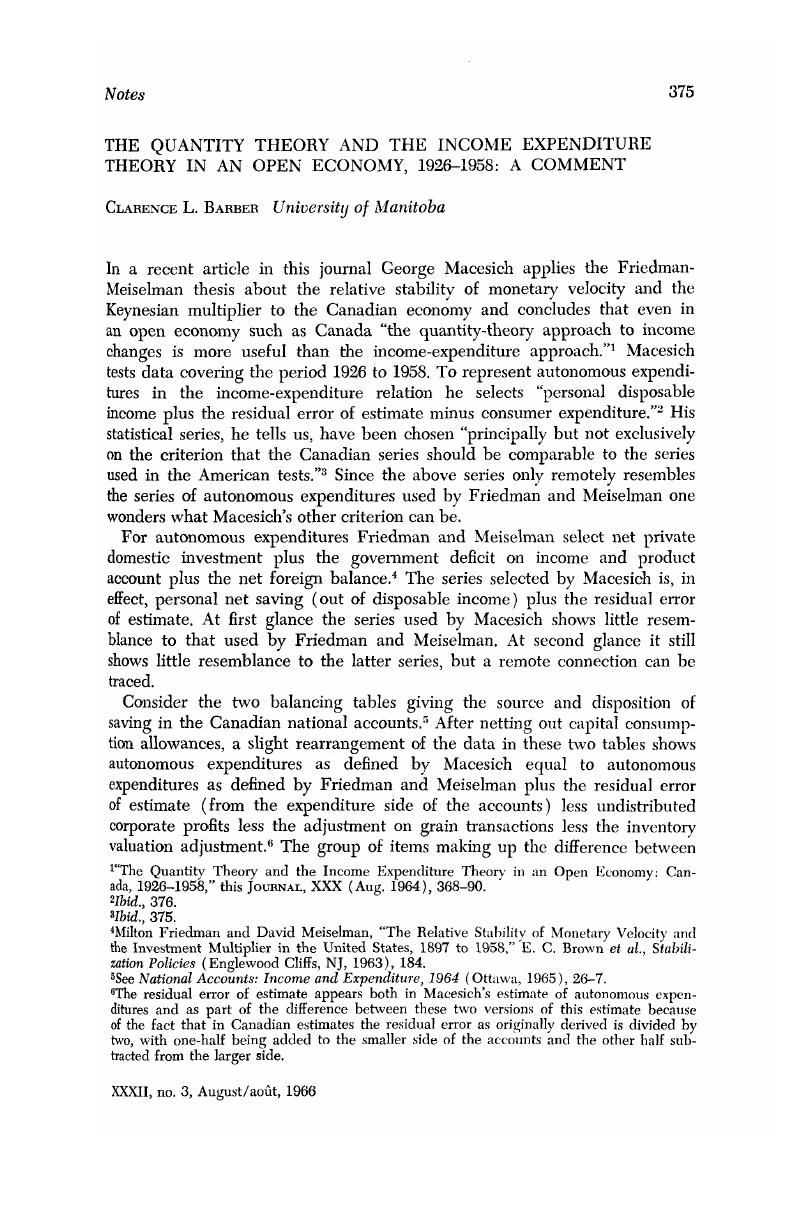No CrossRef data available.
Published online by Cambridge University Press: 07 November 2014

1 “The Quantity Theory and the Income Expenditure Theory in an Open Economy: Canada, 1926-1958,” this Journal, XXX (08 1964), 368-90.Google Scholar
2 Ibid., 376.
3 Ibid., 375.
4 Friedman, Milton and Meiselman, David, “The Relative Stability of Monetary Velocity and the Investment Multiplier in the United States, 1897 to 1958,” Brown, E. C. et al., Stabilization Policies (Englewood Cliffs, NJ, 1963), 184.Google Scholar
5 See National Accounts: Income and Expenditure, 1964 (Ottawa, 1965), 26-7.Google Scholar
6 The residual error of estimate appears both in Macesich's estimate of autonomous expenditures and as part of the difference between these two versions of this estimate because of the fact that in Canadian estimates the residual error as originally derived is divided by two, with one-half being added to the smaller side of the accounts and the other half subtracted from the larger side.
7 “The Quantity Theory … in Canada,” 368.
8 “The original statement of Mundell's thesis appeared in an earlier issue. See Mundell, R. A., “Capital Mobility and Stabilization Policy under Fixed and Flexible Exchange Rates,” this Journal, XXIX (11 1963), 475-85.Google Scholar
9 The percentage given for Canada is the decline from 1928 to 1933. Use of 1929 as a base would be misleading because of the rather large inventory reduction in agriculture in that year, a reduction that reflected the large grain crop of 1928 and the much smaller crop of 1929.